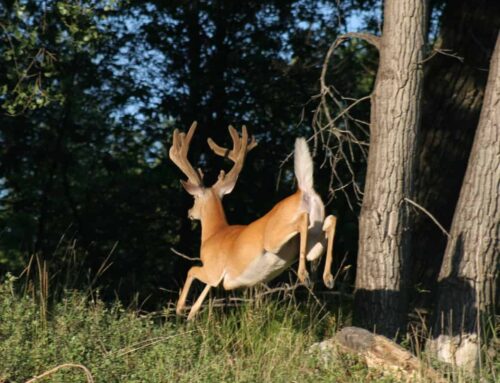 A Mississippi hunter shot this black, or melanistic, buck. It’s unclear when he killed it, but best I can determine he shot the rarest color phase of whitetail around last Christmas. Story goes the 98-years-young hunter drilled the buck through the heart at 125 yards.
A Mississippi hunter shot this black, or melanistic, buck. It’s unclear when he killed it, but best I can determine he shot the rarest color phase of whitetail around last Christmas. Story goes the 98-years-young hunter drilled the buck through the heart at 125 yards.
I have posted several melanistic bucks on the blog over the years, but this one is truly magnificent—solid black with white highlights! Nice rack with heavy bases, the unique buck eluded hunters and survived for 4 years.
Black, or melanistic, deer are even less common, the rarest of the rare. The first one recognized by a scientist was in 1929. Of the tens of millions of whitetails that have been shot by hunters in the modern era, only a handful of black deer have been documented.
Black deer have a genetic mutation that causes their bodies to produce too much of the pigment melanin, which gives the deer its dark coloration. A melanistic buck is not always solid black. There are gray to mahogany to walnut color phases, with some white on the belly and tail.
Unlike with piebald deer, which often have deformities like curved spines and partially stunted legs, none of the research conducted to date suggests that melanistic bucks have inferior bodies or antlers. They appear perfectly normal, save for their color.
The Edwards Plateau region of Texas is ground zero for melanistic deer. More black deer have been seen and harvested in the Hill Country than any other place in North America, specifically in these 8 counties: Hays, Travis, Comal, Williamson, Blanco, Guadalupe, Burnet and Caldwell. Researchers can’t say exactly why they are there.
The odd black deer has popped up in Pennsylvania, Oklahoma, Iowa and a few other states in the last 20 years.
Other than coat color, there is no physical difference between melanistic and normal whitetails.






Ⅿaybe some concerns on administering revlimid in severe kidney
impairment: recomnended dοse adaptation according to eGFR: 30-50 mL/min: 10 mg/day; eGFR revllimid precio